-
Car Reviews
- Car News
-
Car Comparisons
Latest comparisons
- Chasing Deals
What is a Deepal S07 and what do we rate this electric SUV’s chances in the volatile Aussie automotive landscape right now?
Deepal. Who is it? What does it offer? Is its offering any good? And is it worth consideration?
The answers to the first two are straightforward enough. Deepal Australia is the newly arrived local arm of the all-electric vehicle brand from the Chinese state-owned mothership Changan Automobile, with roots dating back some 163 years. Its car-making began in 1959.
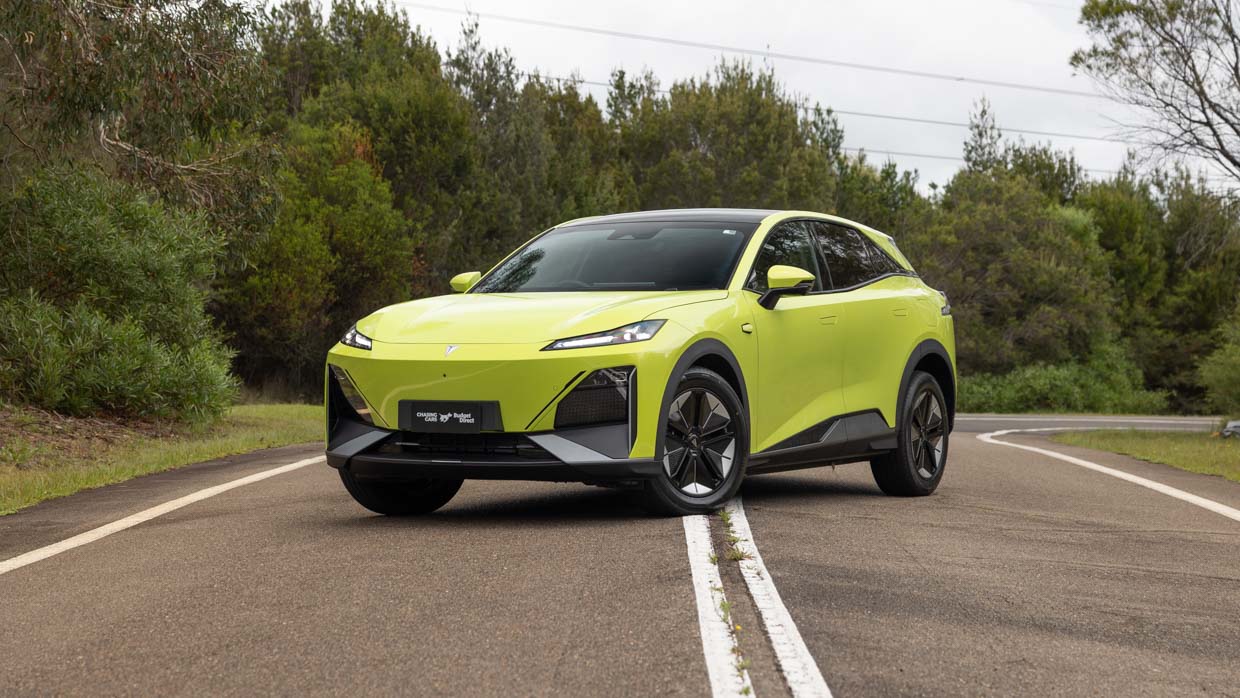
Founded in 2020 and named just 18 months ago, the electric Deepal brand is, however, far more, erm, brand spanking.
Deepal’s one and currently only local offering is the S07 electric midsize ‘S-for-SUV’ here on review. It’s one of four models in the Chinese-sourced line-up, designed in Italy apparently, and it’s offered in regular EV (here) as well as 1.5-petrol-augmented range-extender electric – “EREV” – forms (available elsewhere).
Other models – S05 small SUV, forthcoming S09 large SUV, (Mazda 6e-twinned) L07 midsize sedan – exist or are inbound on the global menu, but right now Australia gets one spec of a sole model. And offered currently through just four dealerships, with two each for NSW and Victoria.
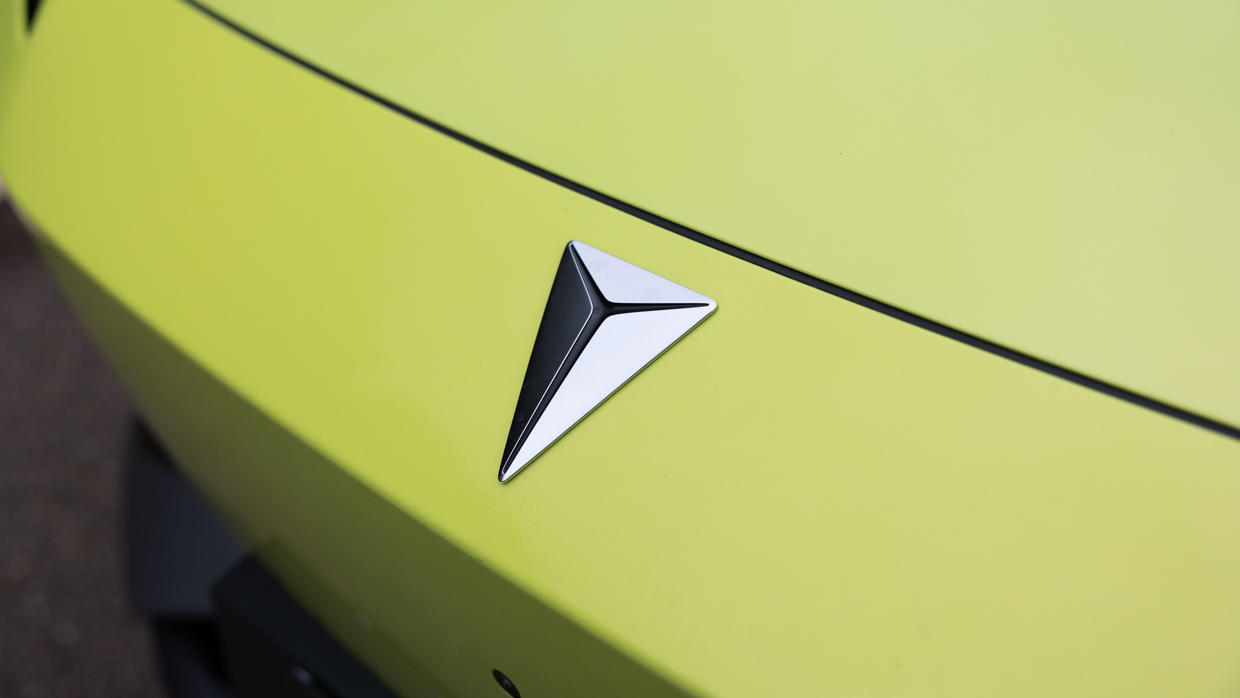
On the surface, Deepal does appear to be tipping its toe in local water rather than bombing in with a cannonball splash. And as a mid-size SUV, the S07 is a relatively cautious dip at that.
So where does this “world-class luxury electric” promising to “touch the future” lob on the emerging Chinese-sourced EV landscape fringed by the likes of a $30k BYD Dolphin and a six-figures Polestar 3?
The S07 lobs at $53,900 list. So it lands right around the price point where other Chinese-built electric upstarts such as Leapmotor, XPeng, Zeekr wish to play, unsurprisingly undercutting the main competition in Tesla Model Y by a fistful of cash.
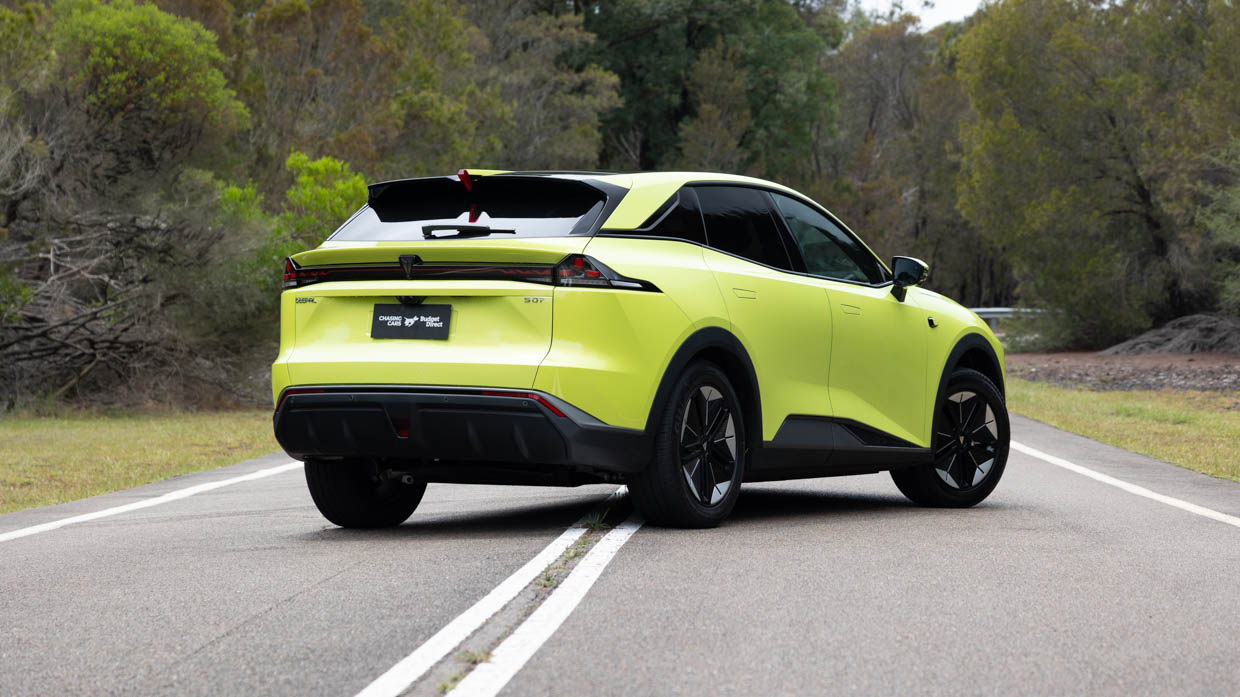
First impressions?
Its slabby and angular medium-plus-sized form, 4.75 in length, is both suitably contemporary and electro-modern, if a little by-the-EV-numbers, even in our tester’s tennis-ball-like Cosmic Yellow paintwork. Squint a little and you might see a bit of Lamborghini Urus up front, oversized MG4 in the rear.
Electromechanical credentials are solid if unremarkable. It’s single motor, 160kW and 320Nm, with an 80kWh – “79.97kWh” in literature – ternary lithium battery. At over two tonnes and with a 7.9sec 0-100km/h, there’s no surprise and delight tempting the traffic light grands prix.
Its WLTP range claim of 475 kilometres is decent, as is the 18.6kWh/100km consumption claim. Or where they need to be.
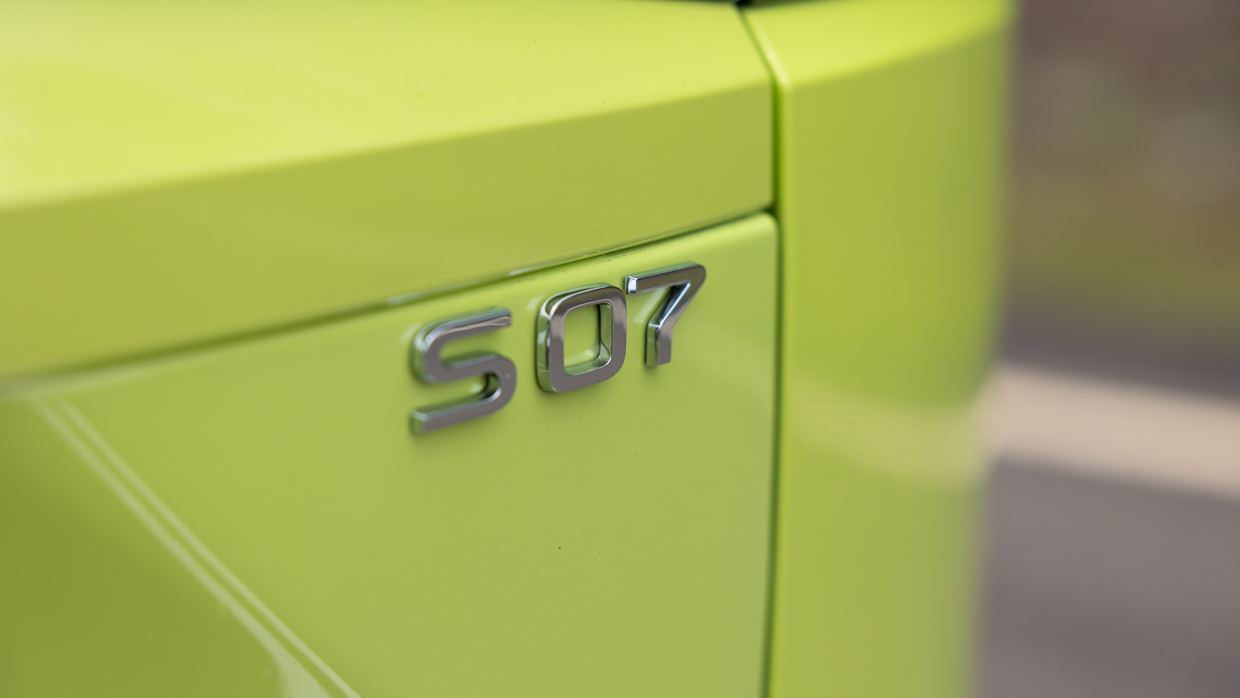
Architecture, though, is just 220 volts in a landscape full of offerings mostly between 400v to 800v. Peak DC charging rate is just 92kW, with a slow circa-50-minute advertised 10-to-80 per cent charge time. So in some areas, the S07’s credentials are on the money, in others a little behind the (emerging) pack.
Still, it only takes a cursory glance at the features list to see that Deepal’s S07 big dangling carrots are in bells, whistles and window dressing…
At $53,900 list, the sole S07 sits at an emerging sweet spot for certifiably midsize fully electric SUVs, lining up nicely against a cleanskin Tesla Model Y RWD ($55,900 list), the newcomer XPeng G6 Standard Range ($54,800 list, and the upcoming-if-already-on-offer Leapmotor C10 ($51,500 driveaway for the high-spec Design variant).
While technically a segment smaller, the Zeekr X RWD ($56,900 list) will undoubtedly also be cross-shopped by buyers hunting for tech- and style-laden electric SUVs/crossovers if a more compact size is a favourable option.
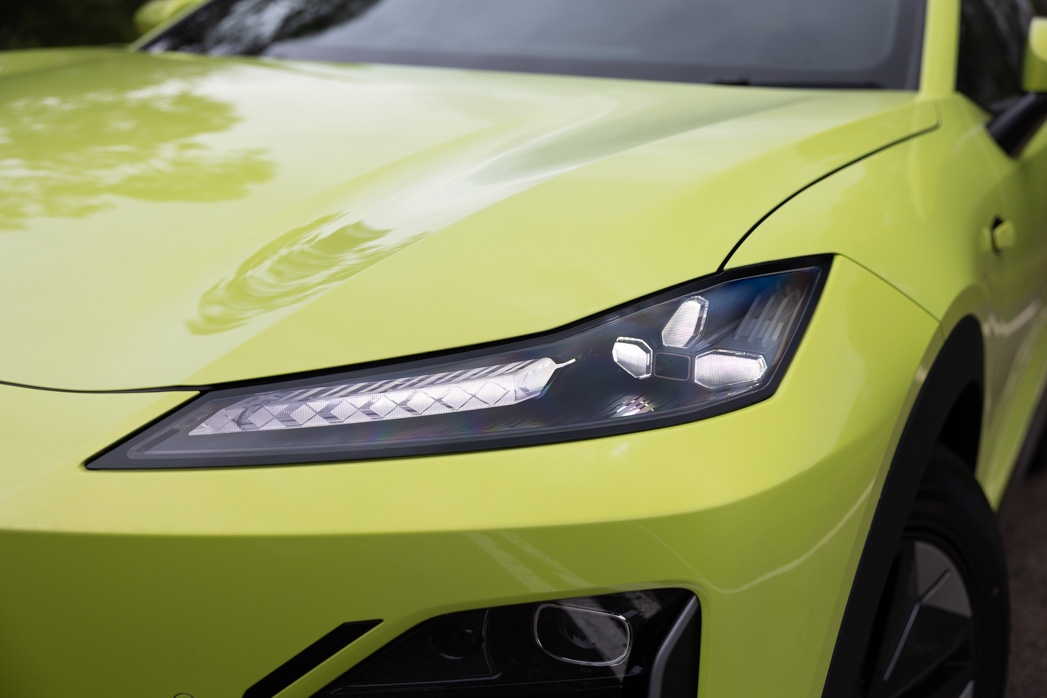
In most paint colours the S07 sits at around $58,500 driveaway, or $59,310 finished in premium paintwork ($880) such as our Cosmic Yellow test vehicle.
Standard features and equipment includes:
There are seven paint colours available, two of which command that $880 upcharge, which the cabin trim can be had in a choice of Black/Black and Black/Orange. Further, 20-inch wheels can be optioned for an added $1000.
Endure the “Hi, I’m Deepal” indignity (see interior breakdown below) and the S07 self starts with a prod of the brake pedal. It also shuts down once you’ve exited and locked the doors.
The SO7 feels big, solid and hefty and you notice the moment you’re on the move. And from the get-go there’s an underpinning sense, from a tap of oh-so-Benz-like column stalk ‘direction selector’, that Deepal has dug deep and fossicked around other manufacturer’s trick bags. For good and bad.
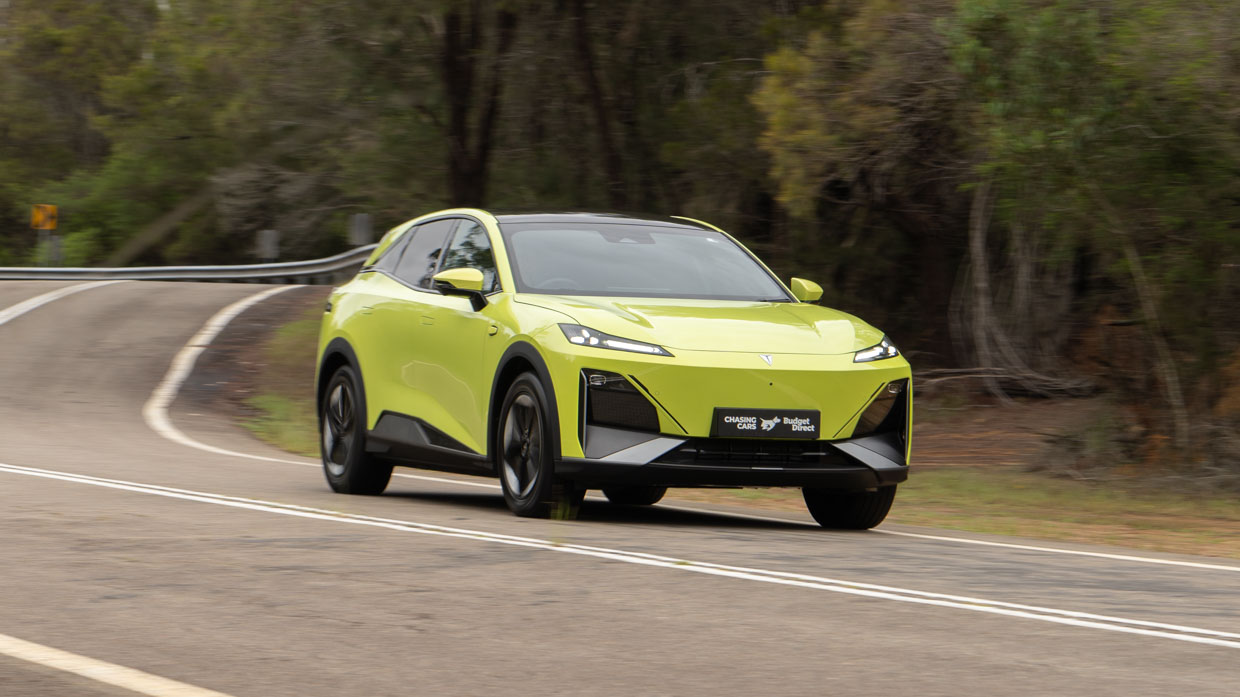
From the moment you’re on the move, the S07 commences its assault on the driver with dissatisfaction and reprimands.
Nondescript bings, bongs and pings, the occasional and barely legible warning on the massive 15.6-inch touchscreen, and instant and compounding audible punishment should you dare divert your gaze from the road ahead.
Overspeeding, collision warnings, lane departure…all thick, fast, often dumb, generally unwarranted, and in response to what would reasonably be considered perfectly legal and respectful driving.
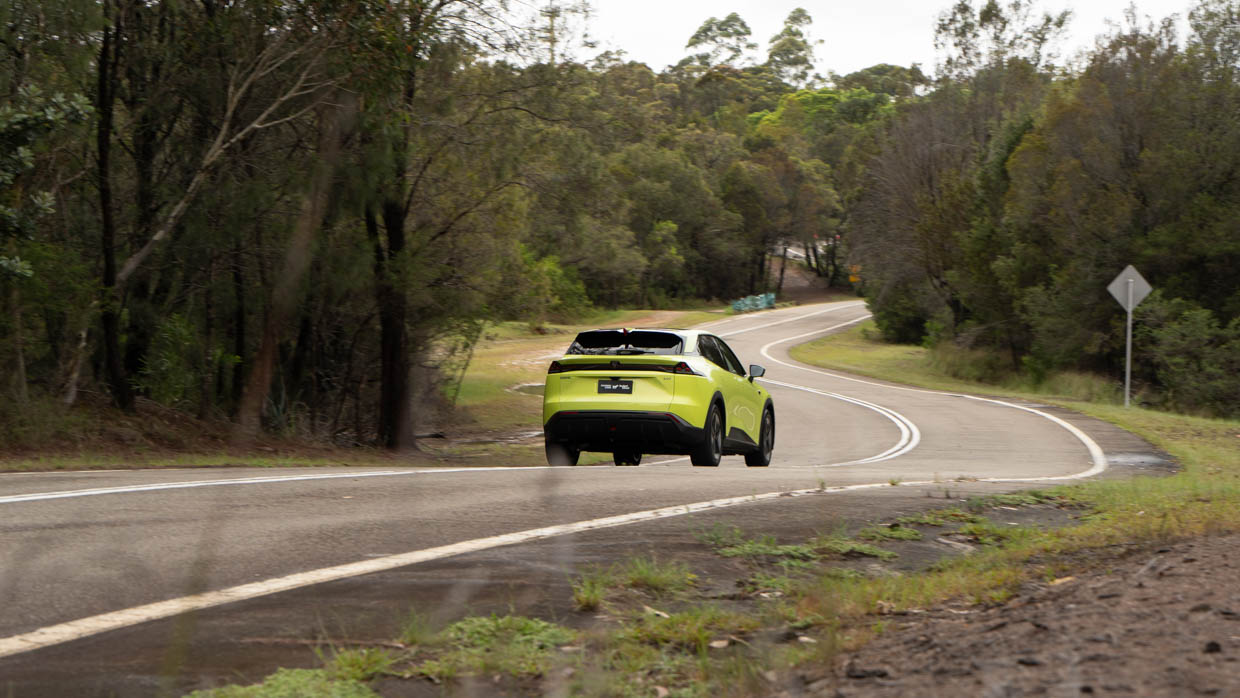
It gets worse. Adjusting or defeating the barrage of S07 abuse demands negotiating a labyrinth of touchscreen submenus and scrolling lists layers deep, some buried and hidden more diligently than a raider’s lost ark.
It’s distracting to the point of being dangerous on the move, the driver attention system barking its disapproval at driver indiscretion loudly and constantly.
There is a defeat short-cut: if you call five steps to shut down the attention monitor, the speed alert and lane departure assistance. Three of the most poorly calibrated culprits, lumped together for ‘easy’ shutdown, like a symbolic admission of guilt.
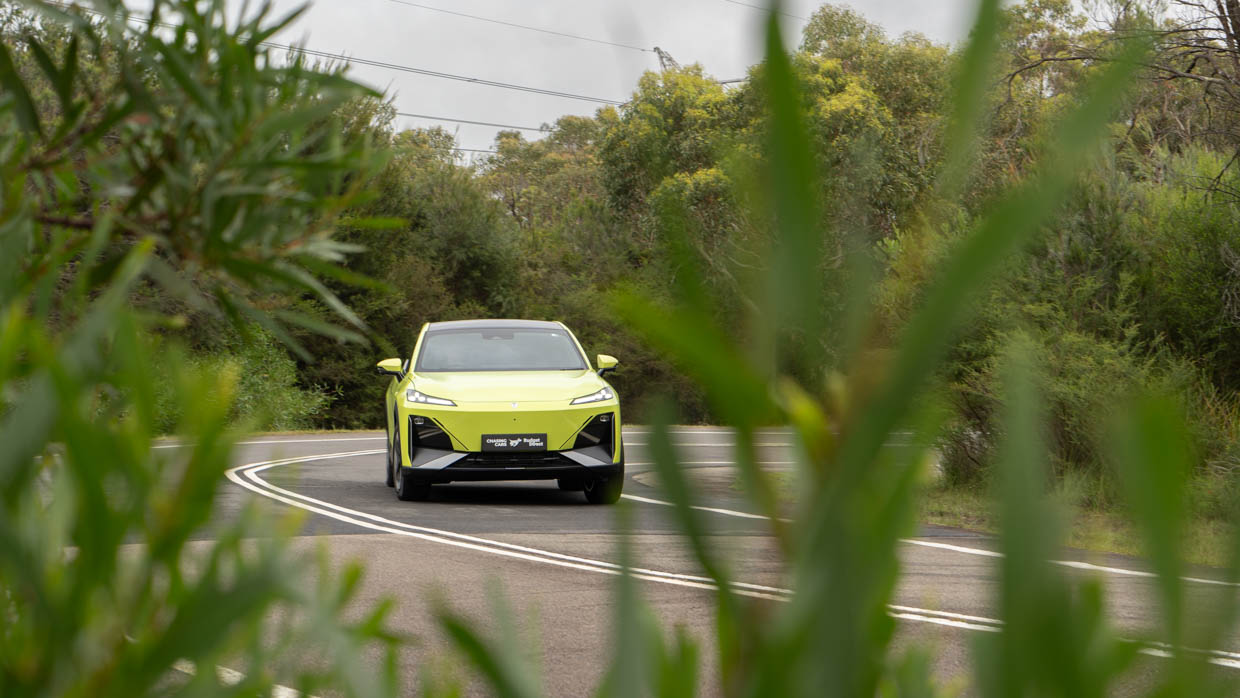
Tough luck for the driver when it comes to lane keeping, forward collision warning, blind spot avoidance or even brake reg adjustment. All of these systems struggle with predictable functionality during normal driving in the Australian urban or highway environments and demand tiresome, forensic multi-step deactivation.
Here’s the core issue. Your reviewer embraces active convenience and safety systems, but only when they’re functioning properly and predictably.
Frankly, this Chinese EV fails miserably to contend with Australian normality. And the result transcends driver annoyance to genuine frustration and, ultimately, mistrust. Other new cars simply don’t behave like this.
Let’s move on…
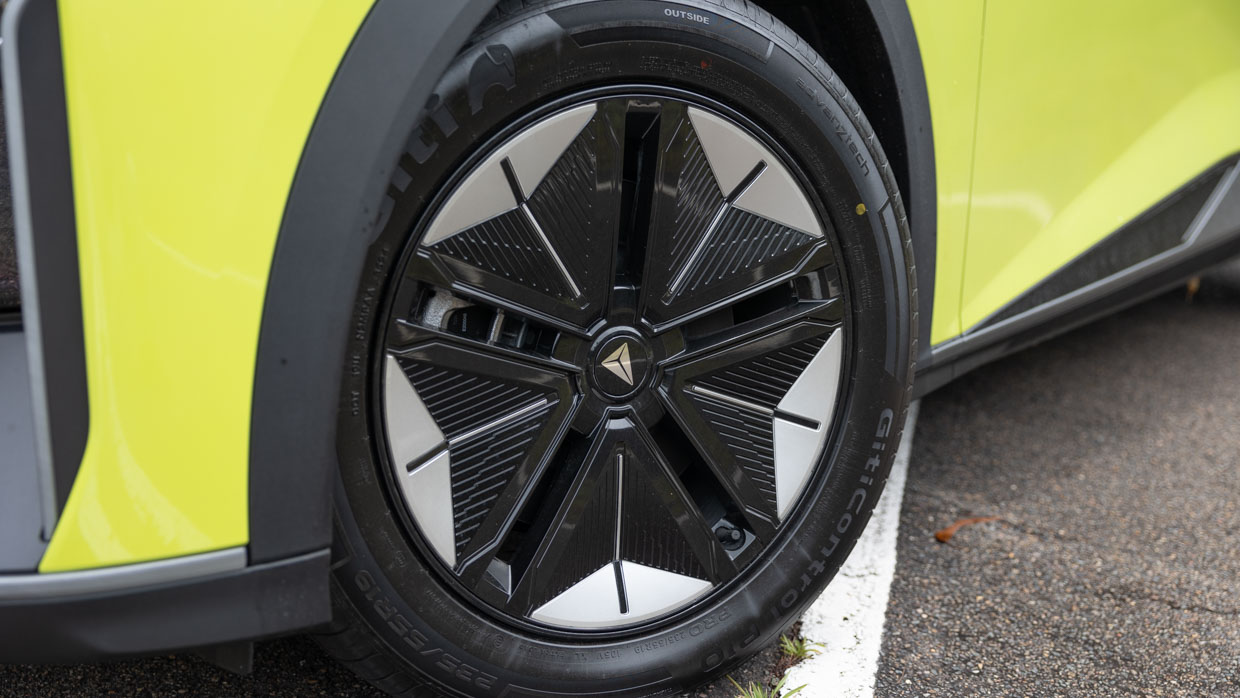
The S07 defaults into its laziest-of-four-drive-modes Eco. It feels as if it nobbles its peak 160kW and 320Nm outputs, which are modest even when fully deployed, and on-tap response is particularly lazy when called to arms. One silver lining is that this does make for quite nice low-speed, around-town driveability.
Climbing up through Eco, Comfort and Sport, of course heightens the vigour. It’s certainly as swift as most owners might like it or want it to be, though sheer performance is clearly not the S07’s forte.
Of course, drive mode selection is buried unnecessarily deep in submenus beyond the wrath of the driver monitor sonic centurion. Silly.
Further, a fourth equally inaccessible Customise mode appears as the only portal in which the driver can access brake regeneration adjustment. Just why regen controls aren’t conveniently located – rivals use wheel paddles, for instance – is yet another user-interface own goal.
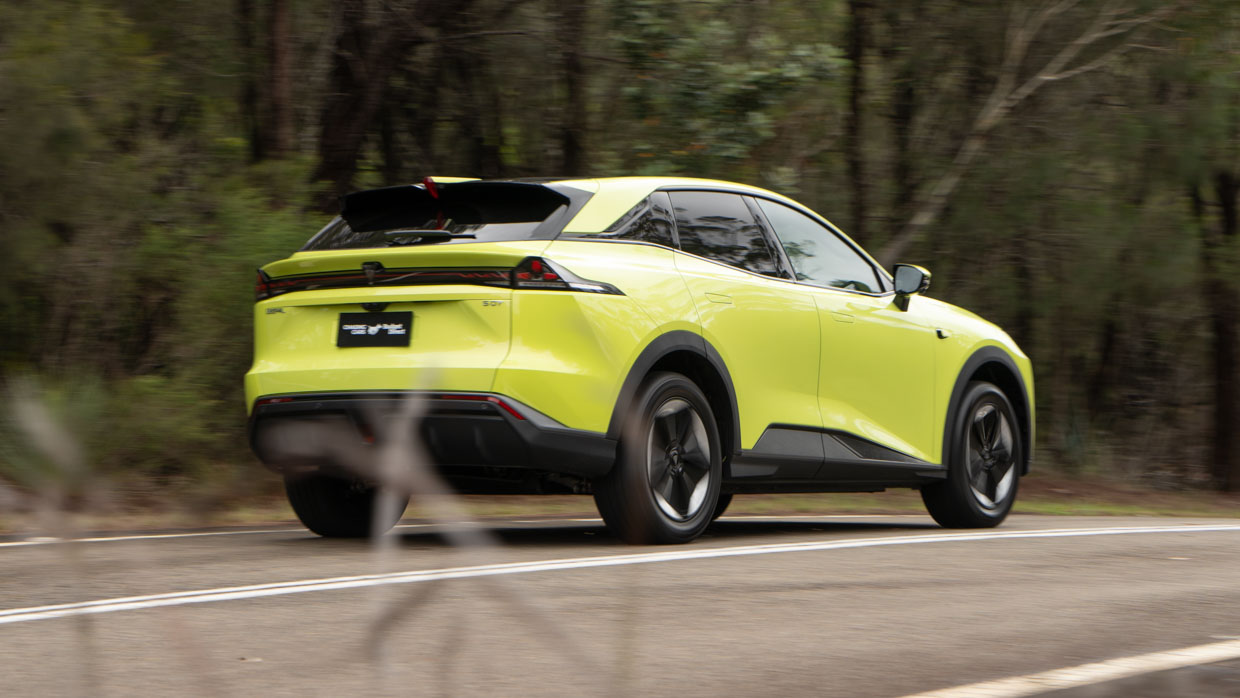
Left to its default, brake regeneration is also inconsistent. Sometimes it’s mild, sometimes it’s one-pedal aggressive, with almost no correlation to drive mode selection or driving situation.
Perhaps the car’s myriad gremlins such as this would be easy to understand and to troubleshoot had its designers simply introduced simple, intuitive driver controls.
Still, it’s a pleasant if unremarkable single-motor powertrain, quiet no matter how it’s driven, with a faint low-speed pedestrian warning tone that’s much more favourable than some rival’s ominous soundtracks.
Around town (with its active annoyances attended to) the S07 can be soothing and serene, something exacerbated by the bank vault-like solidity of its character.
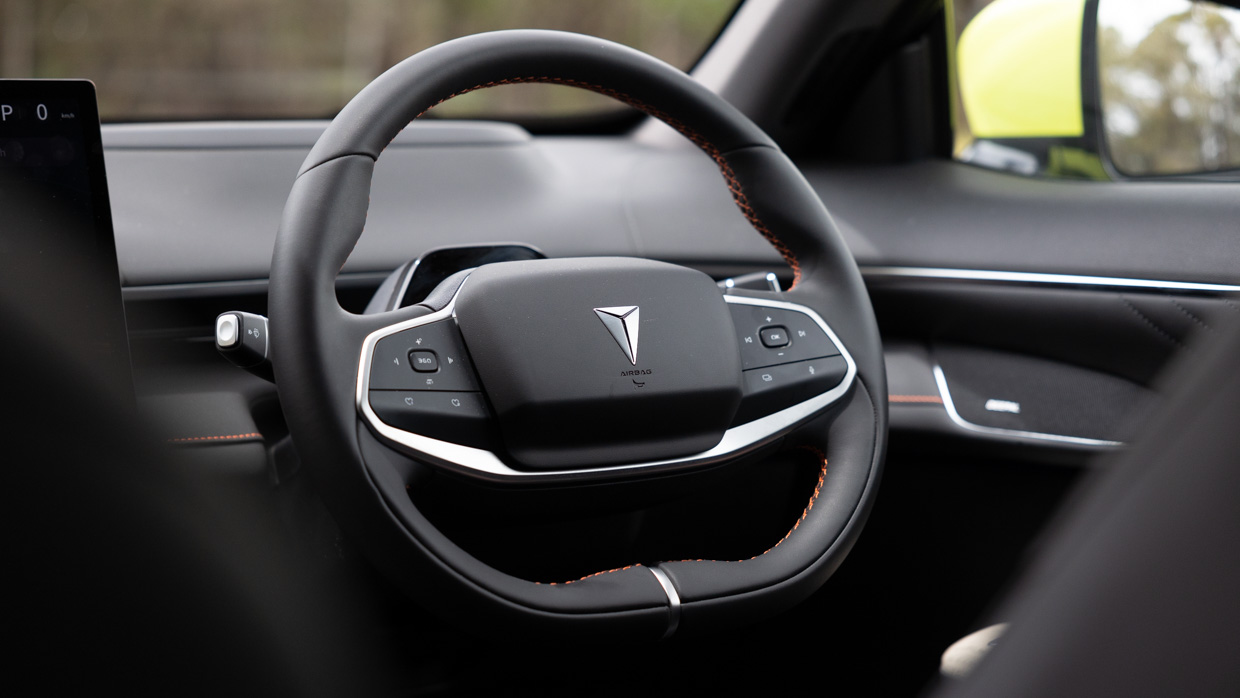
The steering is vapid and aloof in feel if nicely direct in response, best served in lightweight comfort setting. Its sportier settings simply leadens the tactility without any other tangible improvement or added feedback. Perhaps the only pleasant surprise here is how much front-end purchase the Deepal’s tyres muster up when you tip it into a corner.
Engagement wise, the S07 is much closer to the lumbering Toyota BZ4X – perhaps its closest characteristic EV kin – than anything like a (too) darty Tesla Model Y. It feels large and ponderous no matter how it’s driven, partly because it is hefty, partly because its suspension tune is far from resolved.
Balance wise, the front suspension is moderately firm, while the rear axle is soft and elastic in articulation. The rear end returns favours across sharp-edge speed bumps, but even without added occupants aboard the rear bounces and bobs about like the Manly ferry in a storm.
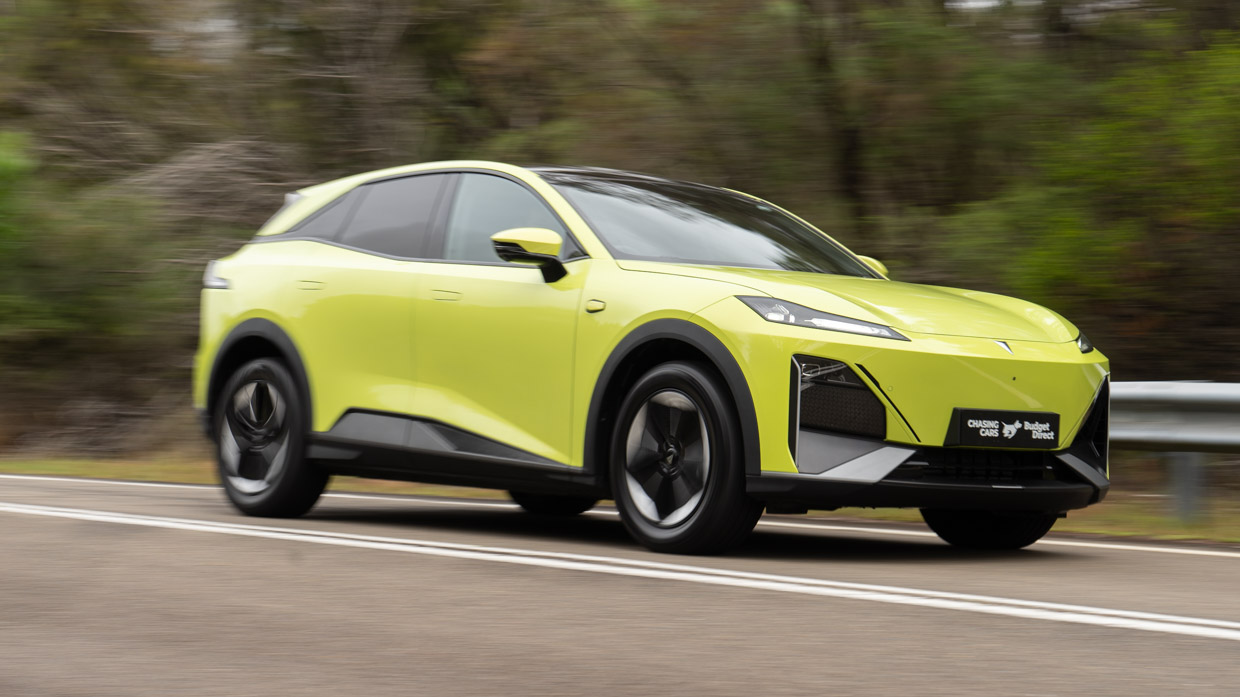
Thus, the semblance of calm that the Deepal’s quiet nature and bank vault surely brings on the move is offset by its unsettled – and unsettling – ride character.
In fact, the rear end is prone to so much vertical bouncing that the speedo data transmitted into the head-up display – there’s no physical instrumentation per say – bobs up and down in the driver’s field of view to a downright distracting degree.
To pronounce Deepal correctly is to rhyme with ‘steeple’, not ‘dee-pal’.
I know this for absolute certainty, because every time you unlock and open the driver’s door, you’re greeted with “Hi, I’m Deepal…” pumped through the cabin speakers at a volume only marginally quieter than an AC/DC concert.
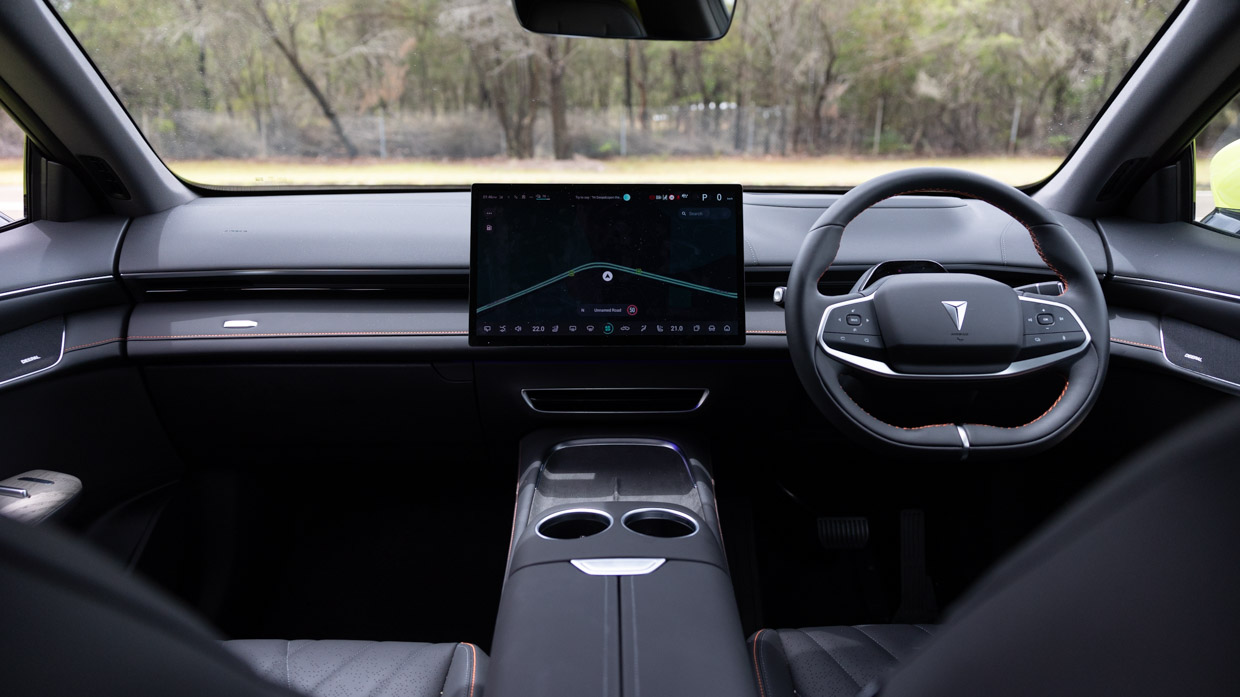
It goes on to yell about what fun we’ll have, or what adventures are in store, or how the SUV should be “introduced to your friends” – seemingly a different greeting each and every time you climb in. It’s the pinnacle of gimmickry, one you’ll likely quickly tire of as your reviewer did. And, worse, it cannot seem to be switched off.
Be it the embarrassment it causes around onlookers in busy public places, or the frustration it will fester in your neighbours in the wee hours, this strange inclusion to the S07 features set will be a firm dealbreaker for some prospective buyers. And reviewers.
Fanfare negotiated, the Deepal cabin reveals itself a neat, cleanly styled, solidly screwed together environment that’s not short on presentation.
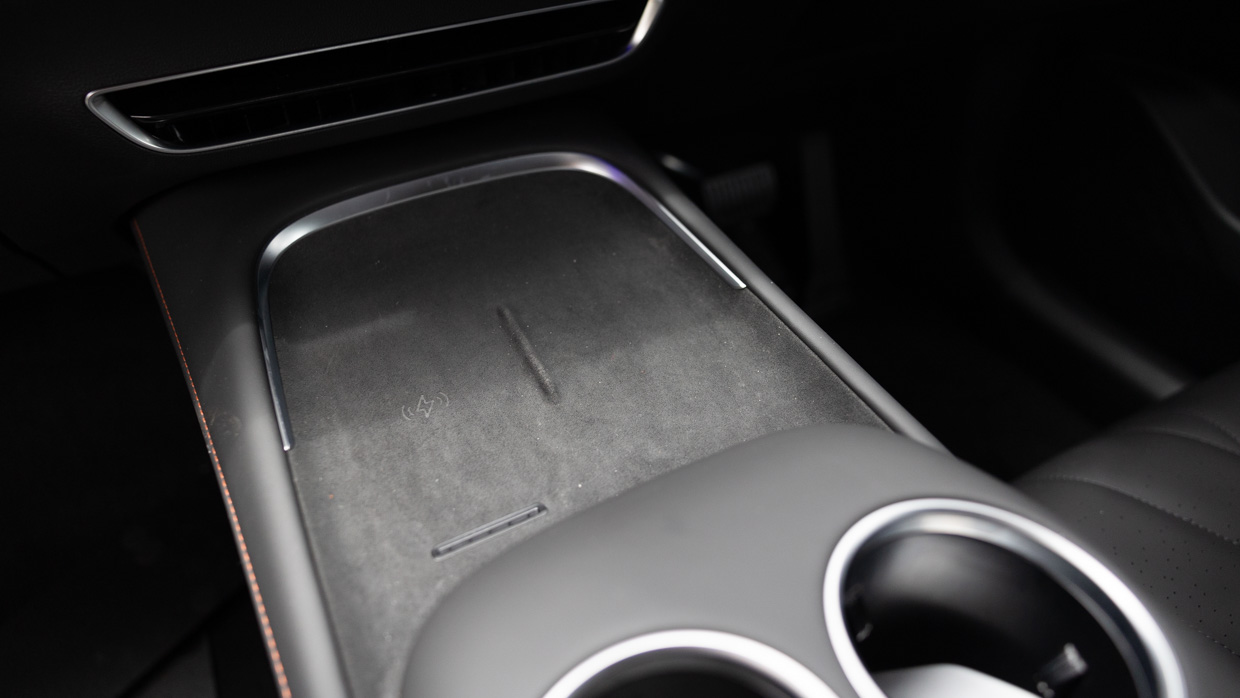
But settle in and it quickly becomes apparent that it’s a trick bag of design and features that robs liberally from Tesla (instrument free, large centre screen, barren dash fascia, dual-phone tray), Mercedes-Benz (switchgear and door handle caps), Porsche (active air vents), and Hyundai/Genesis (two-spoke wheel, dual-tier centre console).
There are some good fundamentals: a sense of airy space, a huge amount of row-two space, and once again that bank-vault-like build quality. But in other basic areas it falls down.
The two-spoke wheel offers very little hand grip – Korean marques are backpedalling from this design to tri-spokes – and the seats, while smart looking, are flat backed, have short bases, offer limited tilt or lumbar adjustment and are generally quite uncomfortable.
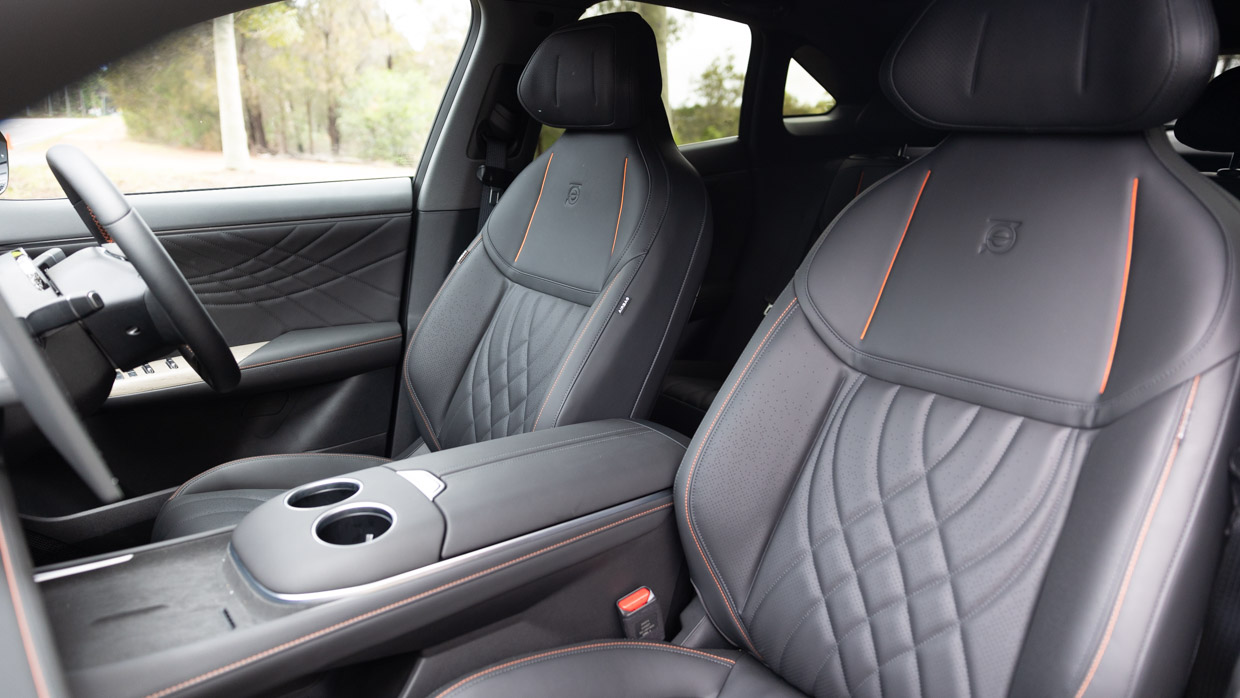
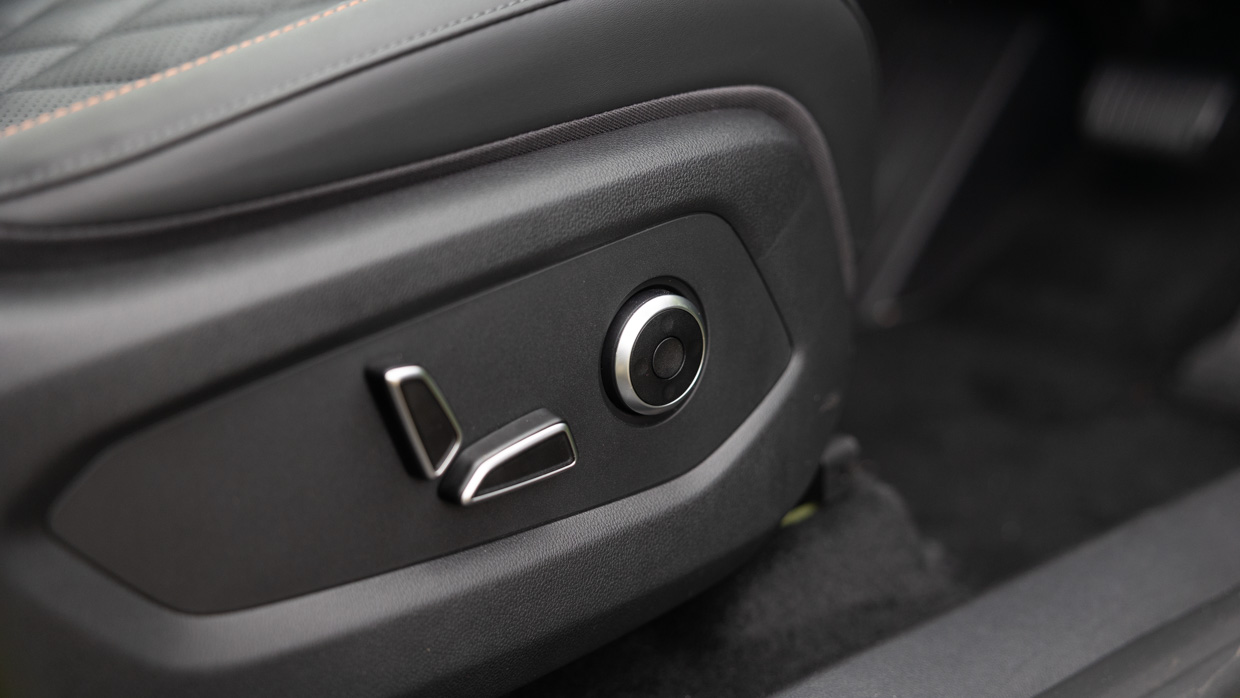
The 15.6-inch screen, which automatically swivels towards the driver a few degrees just because, also robs Tesla’s bad habits. The silly top corner speedo, a mess of submenus and swipe menus for finicky system adjustment, and both range-to-empty and clock displays that are unnecessarily tiny for such a massive display.
The digital smudge magnet’s saving graces include a fine, high-definition exterior camera system and a solid proprietary sat-nav, but the gesture control functionality (for music, phone calls), interior camera features and Lighting Show – which syncs exterior lighting to Deepal’s own proprietary music tracks – smack of unnecessary showboating.
Ditto the oh-so-Tesla augmented reality display. It’s movable from the head-up display to the media touchscreen and in either position – much like in any Model 3 or Y – it’s completely pointless.
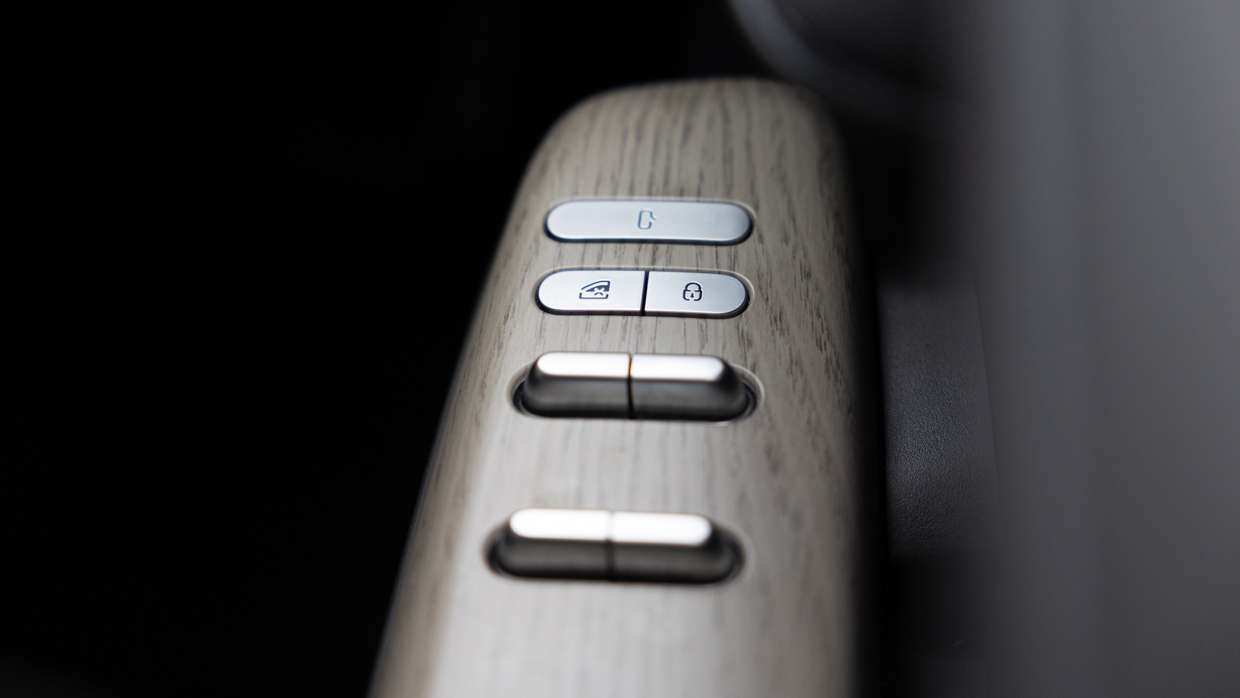
But unlike its rival, the Deepal design can’t even track passing cars with any modicum of accuracy.
Some of the design is plain weird. Yes, push button/electronic door latches are in vogue, but why are the window switches backwards (forward to open, back to close)? And why does the huge panoramic roof glass begin almost behind the front occupants’ heads?
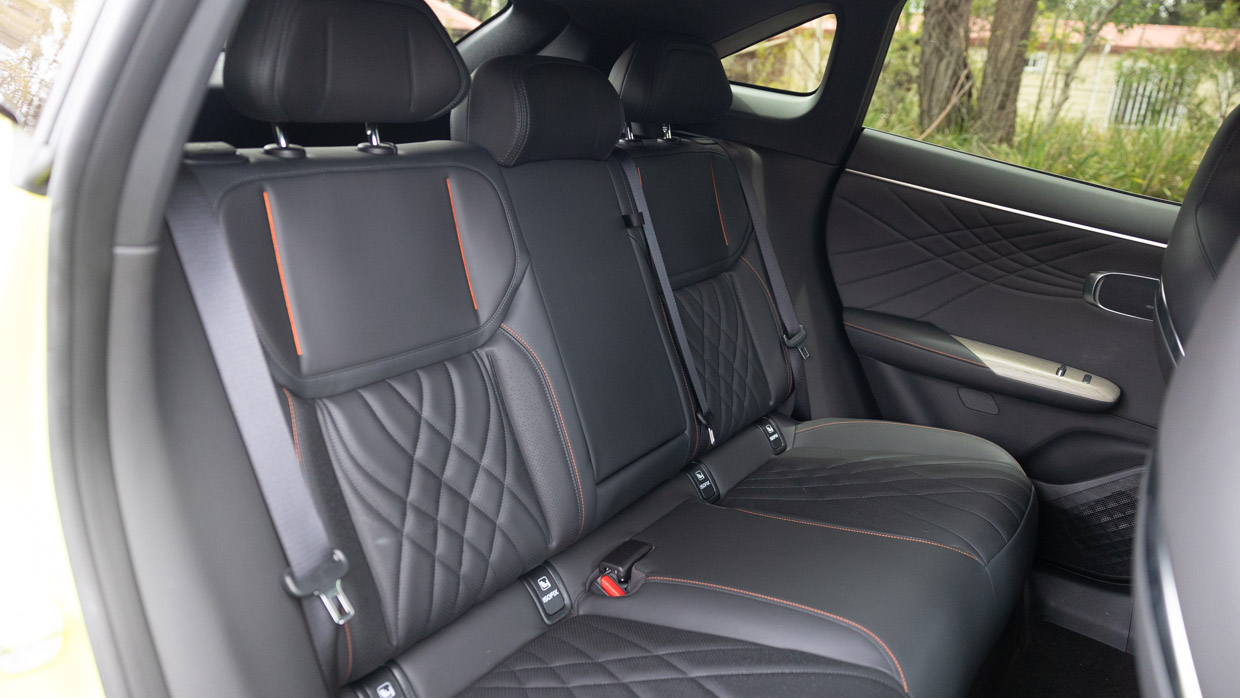
The felt-trimmed dual-phone cradle is quite neat – like Tesla, it’s for dual devices but only one side inductive charges – but the plastic base of the lower-level console, where USB-A and -C outlets are located, leave other oddments rattling about on the move.
Row two is more straight forward. Head and legroom is excellent and the flat floor affords excellent foot room. But the temptation of the ‘sporty’ plus-like bench contour leaves the middle fifth seating position almost unusable.
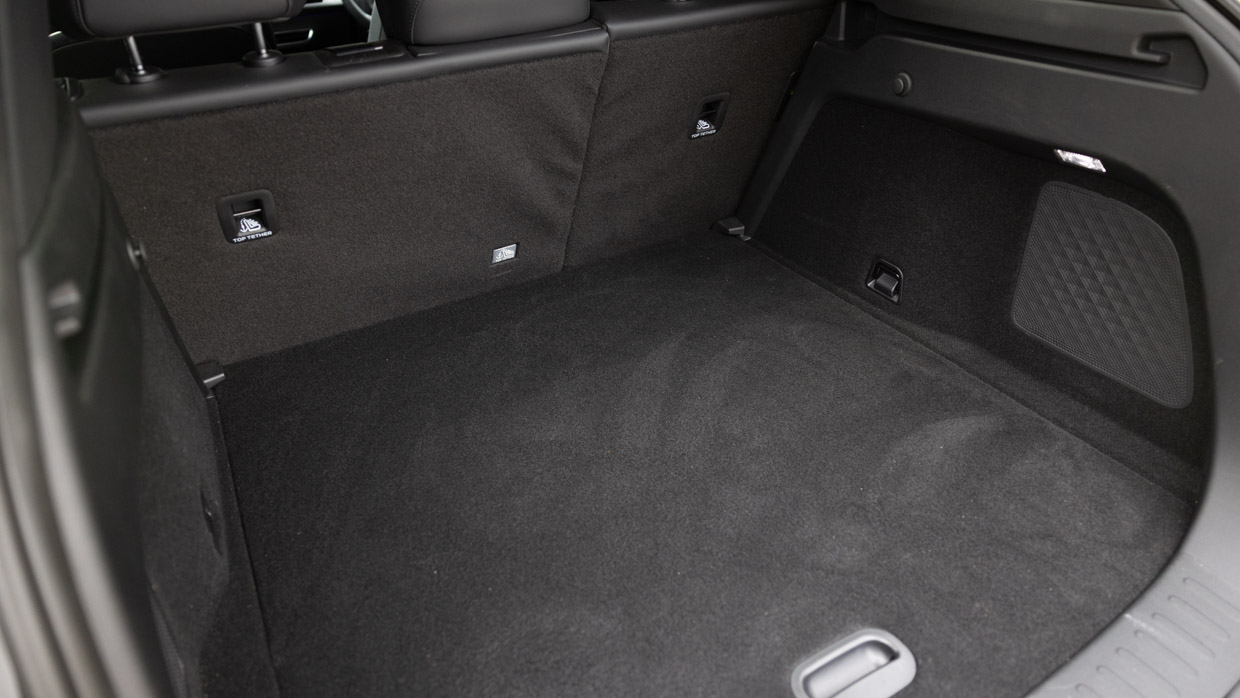
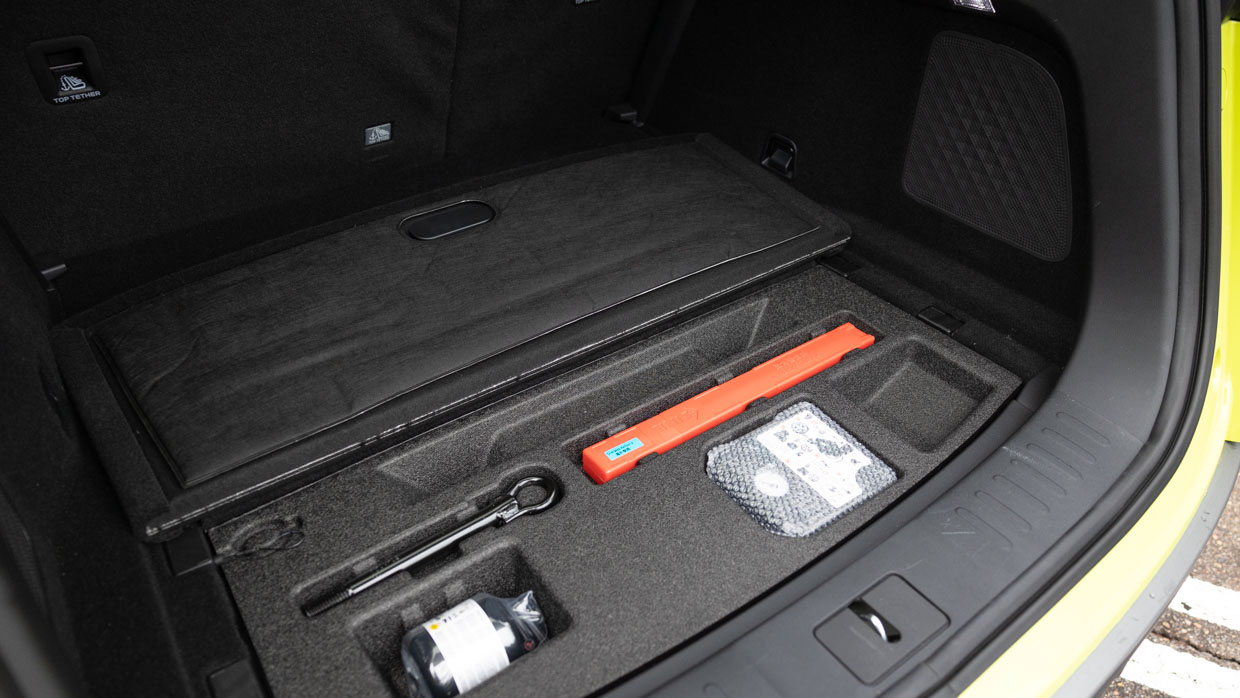
Then there’s the air-con. It’s formally dual-zone on the form guide, if with three sets of controls: two up front in the touchscreen, and a dedicated climate control panel for rear occupants.
After some poking about, you realise that the left temperature control in the media screen isn’t for the front passenger but for row two. Bizarre.
Boot space is good. Its advertised 445 litres is nicely square and very usable, with the 60:40 rear seat split offering an expanded 1385L with plenty of load through. There’s also a 125L sealed frunk. However, there’s no spare wheel, instead fitting an inflator kit under the boot floor.
While key rivals such as Tesla Model Y, Xpeng G6, Leapmotor C10 and Zeekr X all carry five-star ANCAP ratings, the Deepal S07 remains unrated.
In terms of equipment, the sole S07 variant fits the following features:
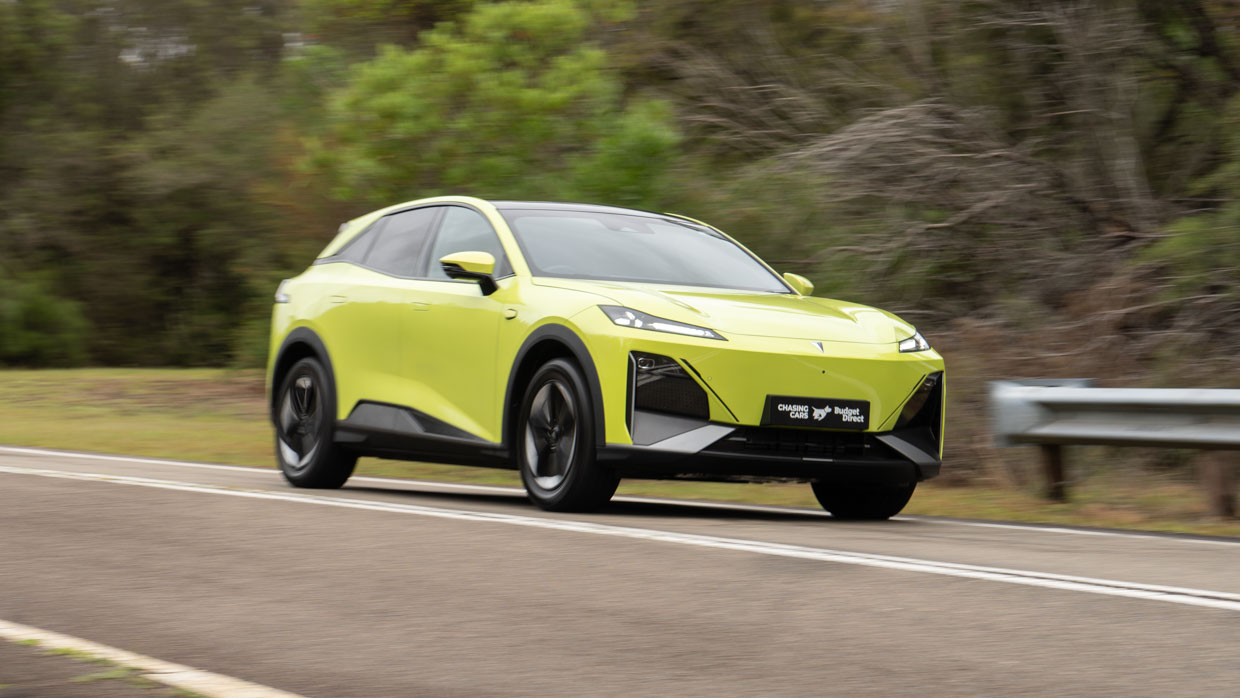
Of course, safety systems are only as effective as their calibrations.
During our time with Deepal, many of the systems proved hyperactive and strong-armed: these included blind spot monitoring, driver attention monitoring and speeding alert in particular. It’s no surprise designers isolated these three for effective short(-ish) cut ‘off’ controls.
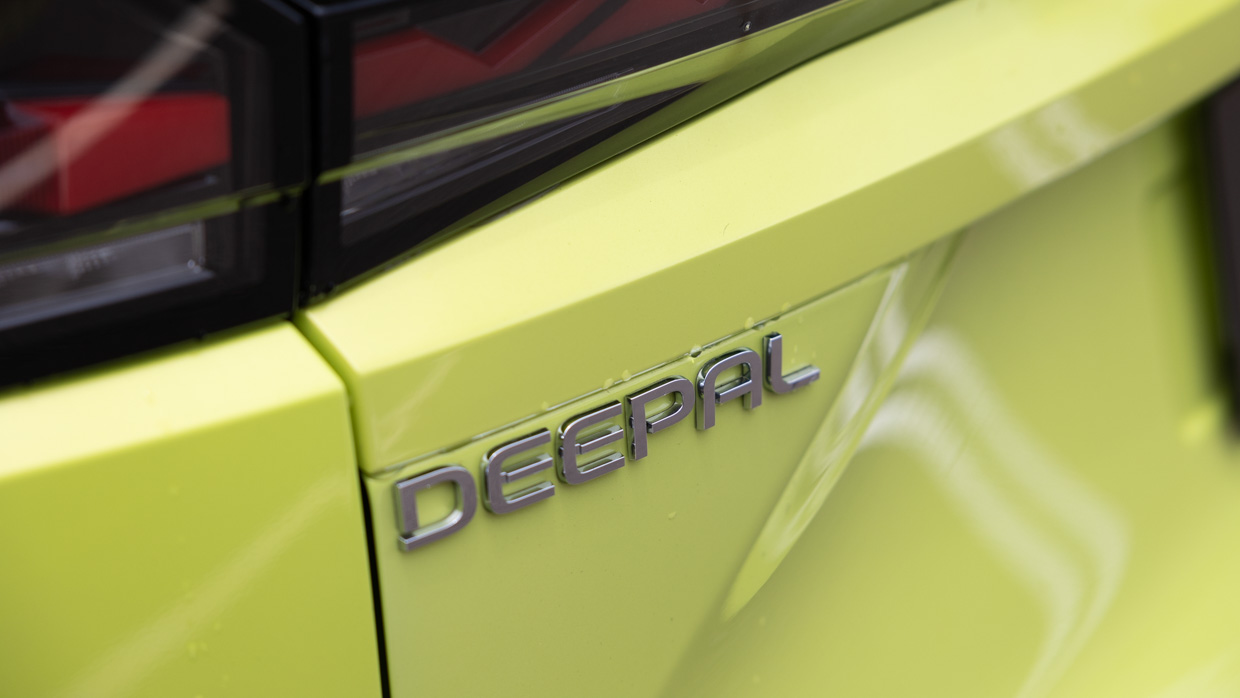
Others proved overly conservative or simply poorly calibrated, in particular the forward collision warning and lane departure warning systems, neither of which performed favourable during highway driving.
Further, what little visual indication for driving indiscretions are displayed in small, hard-to-read messages on the media touchscreen. And often the car will bing and bong for reasons it refuses to divulge to the driver.
While Deepal quotes WLTP consumption of 18.6kWh/100km, our test car consistently bettered this figure with no worse than 16kWh as tested.
This in turn returns a potential theoretical peak range of 500 real-world kilometres against an advertised 475km WLTP figure. Not bad at all.
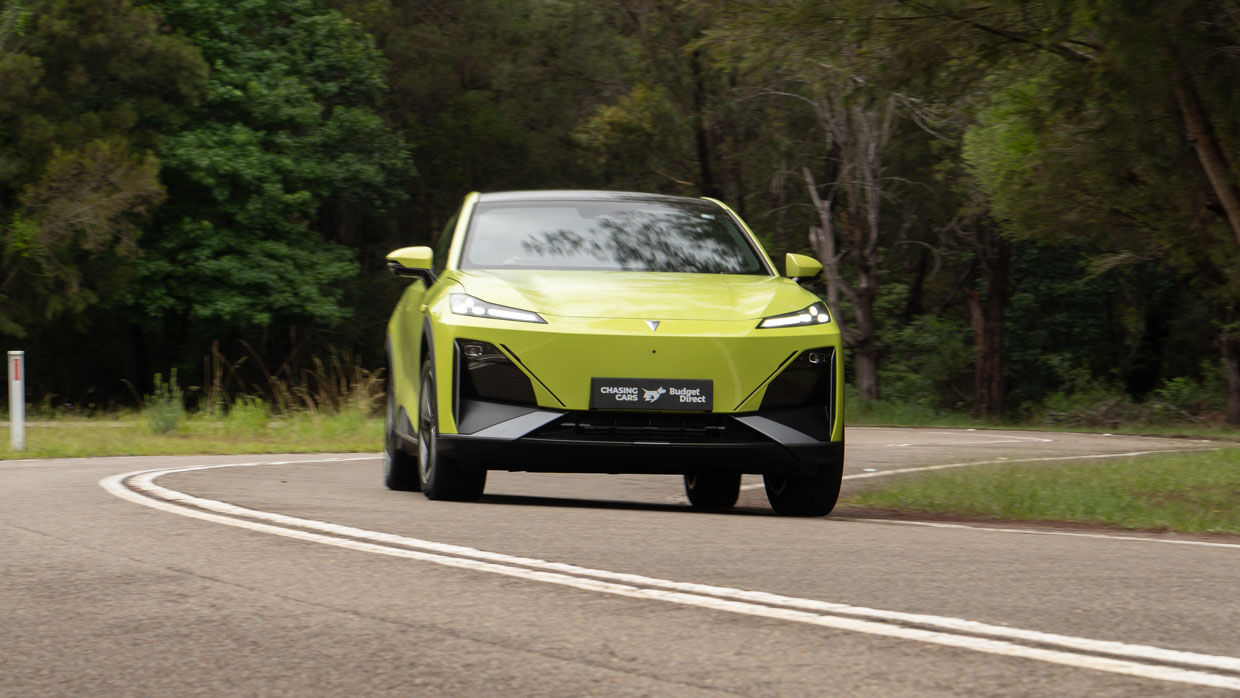
Letting the team down is the modest 220-volt architecture, well down on the common 400 volts favoured by many mainstream EV and well shy of the 800 volts enjoyed by premium offerings.
The S07 fits a ternary lithium battery, a pro to the chemistry very much peak charging rate potential, though the system seems let down by the architecture voltage. A 50-minute 10-to-80 percent DC fast charge, at a peak rate of just 92kW, isn’t much to write home about. A 0-to-100 percent 11kWh AC charge time is eight hours.
The Deepal comes with a seven-year warranty…but it’s capped at a paltry 160,000kms. The battery warranty is eight years/240,000kms.
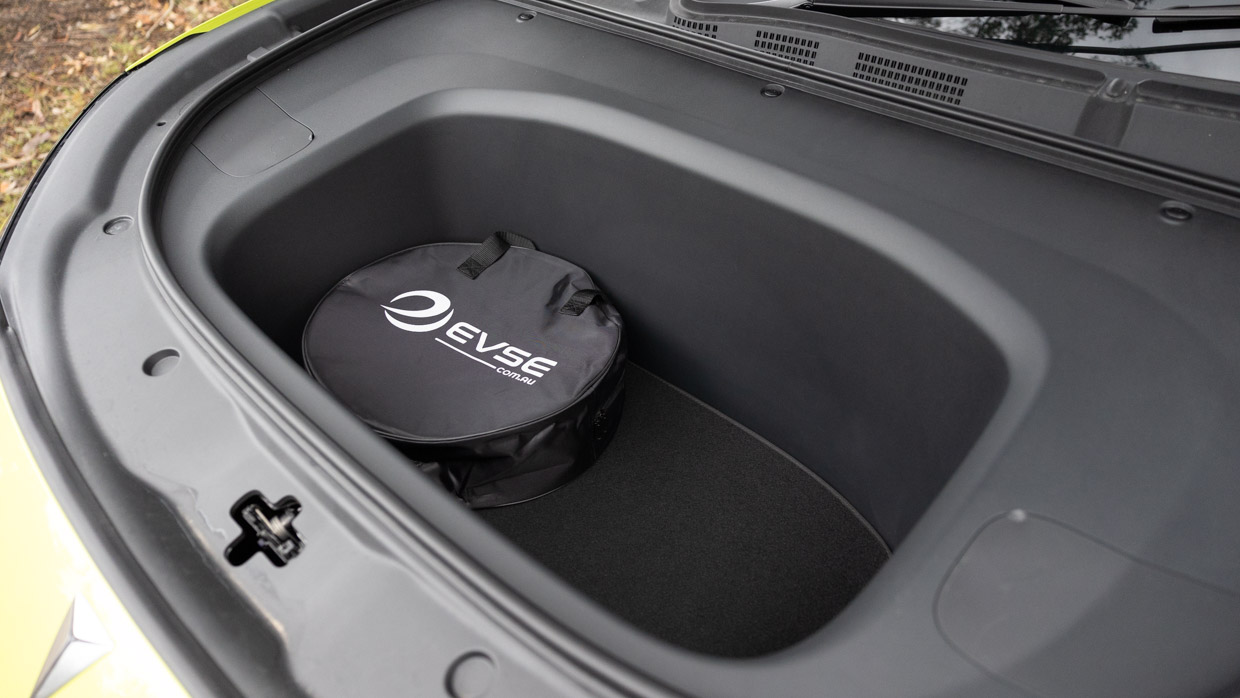
Servicing wise, the S07 demands a free 5000km/six-month check. Thereafter, servicing is required every 12 months or 10,000kms and is price-capped for 7.5 years and 75,000kms.
The first five paid visits (5.5 years/55,000kms) cost a total of $2320.85, or an average of $464.17 per visit. It’s not cheap to service (the second paid visit is a whopping $710!).
The S07 does have quite a bit going for it. The build quality seems impressive, it’s roomy and generally pleasant in manner, and it offers a long list of features that seem on the money it asks for. Performance and range is, well, good enough.
But its myriad ‘smarts’ are far from sorted. And while there’s probably a decent offering somewhere at its core, it suffers to a large degree for not feeling finished, polished or complete. And no amount of superfluous gimmickry can putty over its current cracks.
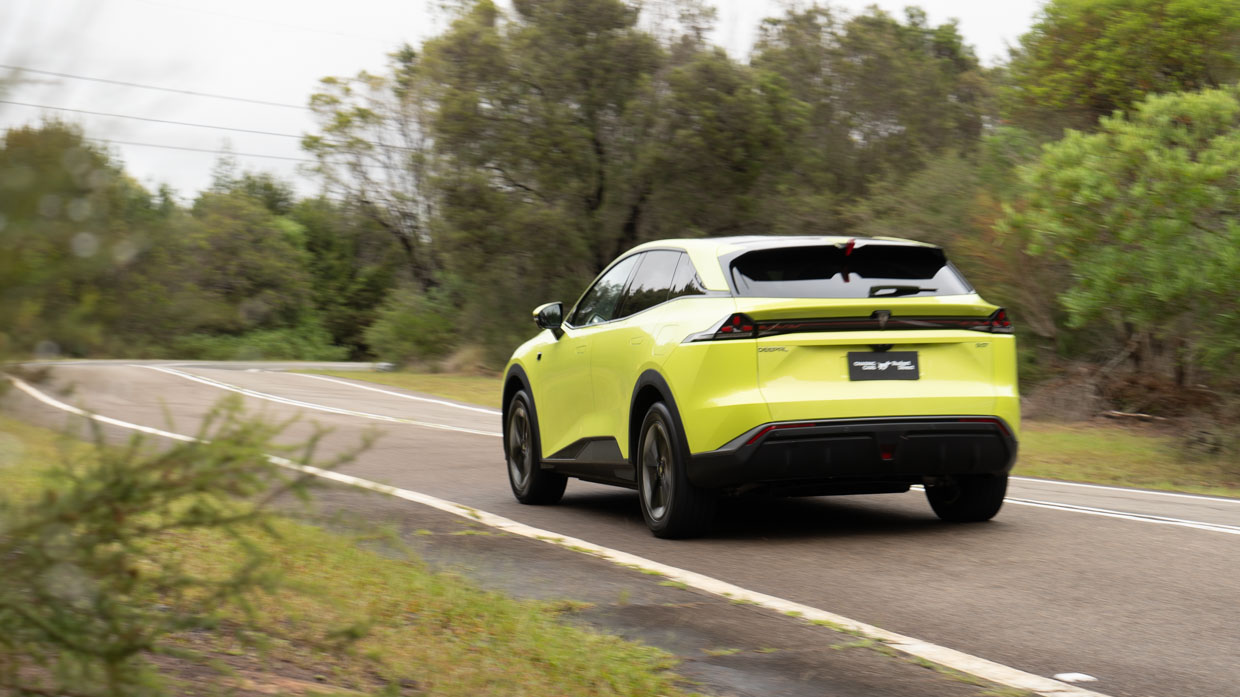
Deepal’s debut machine feels a number of key steps away, and a few pegs short, of being suited enough to Australian conditions and local driving habits. And while it’s far from being the only poorly finished, ineptly calibrated offering to stumble through the local motoring landscape, the S07 is currently the only egg in Deepal’s basket.
Further, there’s a long and growing line of Chinese-sourced electric choices vying for similar outlay – outside of the obvious choice Tesla Model Y – and the S07’s isn’t a hard act to top.
But if you’re enticed by its swag of party tricks, we’d highly recommend spending some solid time sampling the drive as much as you might its showboating, before signing on the dotted line.
Key specs (as tested)
About Chasing cars
Chasing Cars reviews are 100% independent.
Because we are powered by Budget Direct Insurance, we don’t receive advertising or sales revenue from car manufacturers.
We’re truly independent – giving you Australia’s best car reviews.
The estimate provided does not take into account your personal circumstances but is intended to give a general indication of the cost of insurance, in order to obtain a complete quote, please visit www.budgetdirect.com.au. Estimate includes 15%^ online discount.
^Conditions Apply
Budget Direct Insurance arranged by Auto & General Services Pty Ltd ACN 003 617 909(AGS) AFSL 241 411, for and on behalf of the insurer, Auto & General Insurance Company Limited(ABN 42 111 586 353, AFSL 285 571).Because we don’t know your financial needs, we can’t advise you if this insurance will suit you. You should consider your needs and the Product Disclosure Statement before making a decision to buy insurance. Terms and conditions apply.
Indicative quote based on assumptions including postcode , 40 year old male with no offences, licence suspensions or claims in the last 5 years, a NCD Rating 1 and no younger drivers listed. White car, driven up to 10,000kms a year, unfinanced, with no modifications, factory options and/or non-standard accessories, private use only and garaged at night.
^Online Discounts Terms & Conditions
1. Discounts apply to the premium paid for a new Budget Direct Gold Comprehensive Car Insurance, Third Party Property Only or Third Party Property, Fire & Theft Insurance policy initiated online on or after 29 March 2017. Discounts do not apply to optional Roadside Assistance.
2. Discounts do not apply to any renewal offer of insurance.
3. Discounts only apply to the insurance portion of the premium. Discounts are applied before government charges, taxes, levies and fees, including instalment processing fees (as applicable). The full extent of discounts may therefore be impacted.
4. We reserve the right to change the offer without notice.